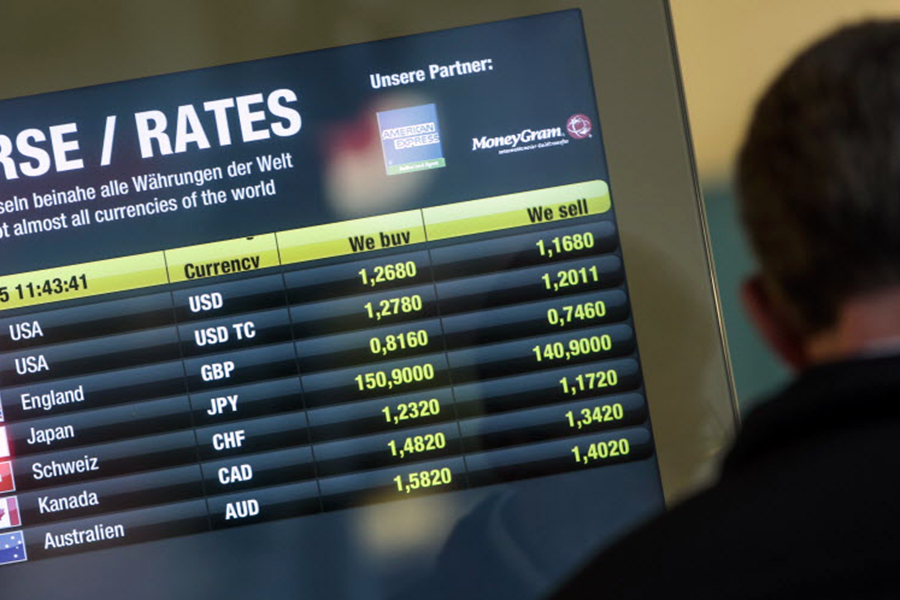Euro hits nine-year low versus US dollar on manufacturing, oil-price slump
Loading...
| TOKYO
The euro hit a nearly nine-year low versus the dollar on Monday as investors bet on quantitative easing by the European Central Bank while soft manufacturing surveys pushed down shares and sent oil prices to 5 1/2-year lows.
European shares are expected to dip, with Britain's FTSE seen falling by up to 0.4 percent. Germany's DAX andFrance's CAC are both seen falling as much as 0.2 percent.
The euro fell to as low as $1.18605, its weakest level since March 2006, having fallen below an important support at $1.20. The common currency last traded at $1.1926, down 0.6 percent from late U.S. trade on Friday.
In an interview with German financial daily Handelsblatt published on Friday, ECB President Mario Draghi said the risk of the central bank not fulfilling its mandate of preserving price stability was higher now than half a year ago.
"The market took his comments to mean that he is ready to adopt quantitative easing," said Shin Kadota, chief forex strategist at Barclays in Tokyo.
Economists forecast that Wednesday's euro zone inflation data will show that in December prices fell 0.1 percent, the first decline since 2009.
That should fan expectations the ECB could ease its policy as soon as Jan. 22, when it holds its first policy meeting this year.
Also underscoring the pressure on central banks to implement more stimulus, business surveys last week showed factories struggled to maintain growth across Europe and Asia.
Even in the United States, which is seen as one bright spot in the global economy, the pace of manufacturing growth slowed more than expected in December.
That sapped investor appetite for stocks, with Wall Street shares ending mostly flat on the first day of trade in 2015 on Friday, after stellar gains of 11.4 percent in the S&P500 index last year.
S&P futures dipped 0.1 percent in early Asian trade on Monday while MSCI's broadest index of Asia-Pacificshares outside Japan dropped 0.6 percent.
Japan's Nikkei fell 0.2 percent on the first trading day of the year.
Chinese shares, however, maintained their bullish tone since last year on hopes of more stimulus, as property shares jumped on local media reports saying mortgage restrictions had been loosened.
The CSI300 index, hitting a five-year high, added more than 3 percent on the first trading day of 2015. It rallied 52 percent last year.
Oil prices, whose decline of more than 50 percent from peaks in June last year rattled many energy producers, hit a 5-1/2-year low as global growth concerns fanned fears of a supply glut.
Brent crude futures dropped as low as $55.36 a barrel, also its lowest since May 2009, before edging back to $55.42, still down a dollar.
"Oil demand is unlikely be robust this year when we look at the state of economies in China, Japan and Europe," said Yusuke Seta, a commodity sales manager at Newedge Japan.
That did not help commodity currencies such as the Canadian dollar, which fell to C$1.1843 to the U.S. currency, its lowest level since mid-2009.
The Australian dollar likewise dropped to a 5-1/2-year low of $0.8036.
The U.S. dollar also surged against the Swiss franc and sterling, extending a recent bull run as markets wagered a relatively healthy U.S. economy will lead the Federal Reserve to raise rates in the middle of this year.





